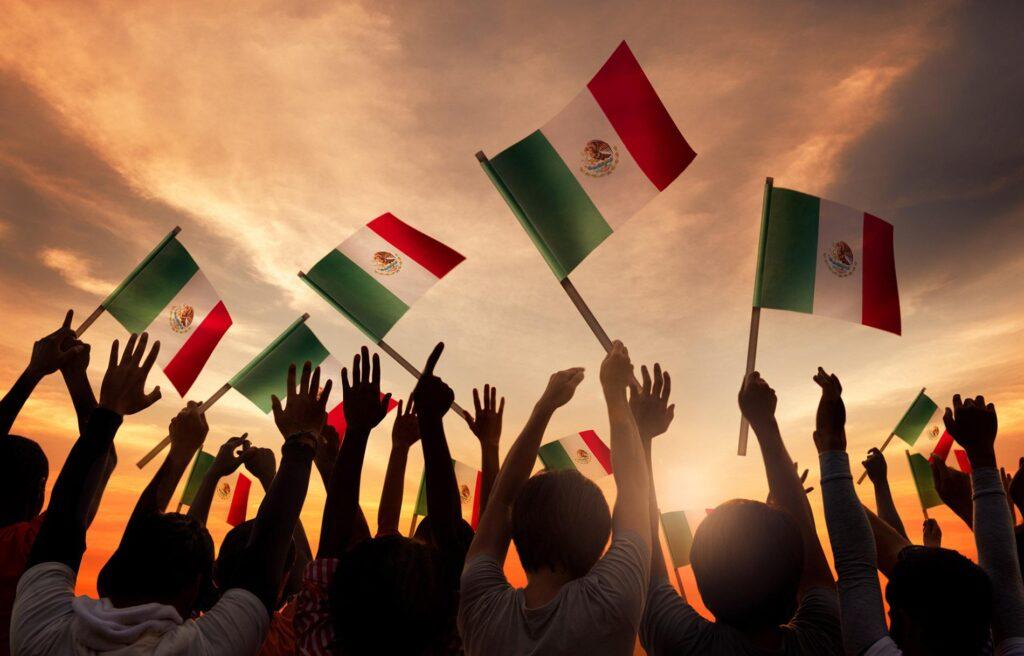Often mistaken for Cinco de Mayo in the U.S., Mexico’s Independence Day commemorates Father Hidalgo’s historic call for freedom from Spain in September 1810.
On September 16, people of Mexican heritage worldwide unite to celebrate Mexico’s liberation from Spanish colonial rule. This significant day is observed as a national holiday in Mexico, featuring a reenactment of a pivotal moment from the nation’s revolutionary history and a colorful array of festivities, including fireworks and dance performances.
Contrary to a common misconception in the United States, Mexico’s Independence Day, which falls on September 16, actually marks the moment in 1810 when Miguel Hidalgo y Costilla, a Catholic priest known as Father Hidalgo, delivered the first clarion call for Mexican independence. Following a stirring speech in the Mexican town of Dolores, Hidalgo raised the banner of the Virgin of Guadalupe, a revered Roman Catholic image symbolizing hope and unity.
Elena Albarrán, an associate professor of history and global studies at Miami University in Ohio, explains, “Independence commemorates the beginning of the struggle. In this case, you celebrate the moment of insurgency, the possibility, and the hope.”

A Prolonged Struggle:
As Father Hidalgo rallied under the banner of Guadalupe, people from all walks of life were inspired to join his cause. This diverse and unruly assembly included women, children, the elderly, and even livestock. Although this untrained and hard-to-control force was eventually defeated, many returned to their homes to tend to their fields.
Hidalgo was stripped of his priesthood by the Spanish Inquisition and later beheaded by the civil authorities as punishment for his revolt. His decapitated head was displayed in Guanajuato, where he and his followers were accused of causing a massacre.
Subsequently, another priest, José María Morelos, assumed leadership of the revolution. He insisted that only those with weapons and horses could remain in the army, creating a more effective fighting force. Nonetheless, Morelos met the same fate as Hidalgo, falling victim to the Inquisition and beheading. This period of Mexico’s struggle for independence descended into chaos as the nation continued to grapple with weakening Spanish rule.
In 1821, a pivotal turning point arrived when Agustín de Iturbide, once a supporter of Spanish rule, became a leader in the Mexican independence movement. Leading troops into Mexico City, Iturbide decisively seized control of the capital and proclaimed Mexico’s independence. His political vision, known as the Plan of Iguala or the Plan of Three Guarantees, aimed to break free from Spanish domination, establish Roman Catholicism as the nation’s religion, and ensure equality for all citizens. Iturbide became the emperor of the new nation, instituting a monarchy-style government and investing substantial resources in opulent attire reminiscent of Austrian royal court fashion.
However, this system eventually crumbled as military leaders vied for power. Finally, a democratic republic was established, with Guadalupe Victoria, an independence-era fighter, becoming Mexico’s first president.
Father Hidalgo: The True Hero of Independence:
Elena Albarrán notes that Mexicans universally recognize Father Hidalgo as the father of independence. “The charismatic but ill-fated priest who set the revolution in motion” is revered for his pivotal role in the struggle.
Confusion with Cinco de Mayo:
In the United States, there is a common misconception that Mexico’s Independence Day is the same as Cinco de Mayo. Albarrán explains, “Every time I teach Mexican history and I ask students when the Mexican independence day is, they either have no idea, which is fine, or fully half or the majority assume it’s Cinco de Mayo.”
Cinco de Mayo’s prominence in the U.S. is largely driven by corporate promotion from alcoholic beverage companies. “Beer advertisers began promoting beer sales in Mexican communities and neighborhoods,” says William Beezley, a history professor at the University of Arizona. “It was an advertising gimmick, and the date was wrong. It’s still sponsored in a lot of places that way.”
Notably, Cinco de Mayo is not a national holiday in Mexico, and its celebration in Mexico differs significantly from the festivities in the U.S. This distinction is often highlighted by Mexican students when discussing the holiday with their American counterparts.
Remembering the First Revolt:
As part of the tradition on Mexico’s Independence Day, the president reenacts a key moment in Father Hidalgo’s legacy from the National Palace in Mexico City. According to Mexican folklore, on the night of September 15 at 11 p.m., Hidalgo rang the church bell in Dolores and urged the villagers to revolt.
William Beezley explains, “As a result, on September 15, the president of Mexico will step out on the balcony, ring that same bell, and give a speech that is supposedly Hidalgo’s words.” Although the exact words of Hidalgo’s speech remain unknown, this ritual honors his unwavering commitment to Mexico and its people, symbolizing the moment when he set the nation on the path to independence.